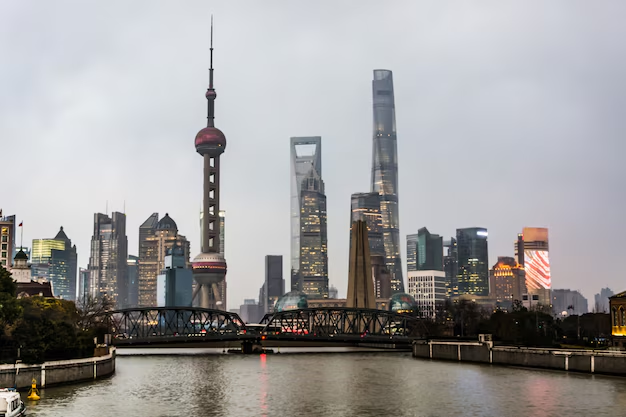
Places of worship hold immense spiritual, cultural, and historical significance, often attracting millions of visitors every year. These revered sites not only serve as spiritual sanctuaries but also as cultural landmarks, drawing people from around the world to witness their grandeur. The impact of these sacred locations on the global tourism industry is undeniable, influencing both religious pilgrims and secular visitors alike. Below are ten of the most visited places of worship around the world, whose legacy continues to shape the tourism industry globally.
Notre-Dame de Paris (France)
Located on the Île de la Cité in Paris, Notre-Dame de Paris is a medieval cathedral that has been a cornerstone of French heritage and Catholic spirituality for centuries. Although it suffered a devastating fire in April 2019, which forced the closure of the church and its surroundings for restoration, this iconic structure had been the most visited monument in Europe before the incident. It had attracted approximately 13 million visitors annually, with major Catholic holidays drawing crowds of up to 50,000 people per day. The cathedral, a masterpiece of Gothic architecture, has undergone several major restorations since the 19th century. Despite the fire, the restoration efforts have kept the cathedral at the heart of both cultural and religious tourism, promising to draw even more visitors once the restoration is completed.
Senso-ji Temple (Tokyo, Japan)
The Senso-ji Temple in Tokyo, Japan, holds the distinction of being the world’s most visited place of worship. With 30 million visitors annually, this Buddhist temple dedicated to the bodhisattva Kannon, the goddess of compassion, has been a major cultural and spiritual landmark since its establishment in the 7th century. The temple was rebuilt after being partially damaged during World War II and has continued to thrive as a destination for both religious pilgrims and tourists. The entrance, marked by a massive red lantern, and the surrounding shopping streets are part of what makes this site a bustling hub for cultural exploration. This constant influx of visitors makes the temple a key player in Tokyo’s tourism industry.
St. Peter’s Basilica (The Vatican)
In the heart of Catholicism, St. Peter’s Basilica is one of the largest and most renowned churches in the world. Located in Vatican City, this monumental structure draws millions of visitors annually, including thousands who gather every Sunday to hear the Pope’s Angelus in St. Peter’s Square. The basilica, with its awe-inspiring Renaissance art, including the Michelangelo-designed dome, serves as a beacon for religious and cultural tourism. The Vatican’s influence extends far beyond religious circles, attracting art lovers and history buffs from around the globe. It remains a central pilgrimage site for Catholics, ensuring a steady flow of visitors each year.
Basilica of Our Lady of Guadalupe (Mexico City, Mexico)
The Basilica of Our Lady of Guadalupe, located in Mexico City, is one of the most visited Catholic sites in the world, with over 20 million visitors annually. The site is significant not only for its religious importance but also for its cultural influence in Mexico and Latin America. The original church was built in the 16th century on Tepeyac Hill, where the Virgin of Guadalupe appeared to the indigenous peasant, Juan Diego. The modern basilica, completed in 1976, has since become a symbol of Mexican identity, drawing worshippers who revere the Virgin of Guadalupe, who is portrayed as a mestizo figure in Aztec clothing. This constant influx of visitors has made the basilica an essential location for religious and cultural tourism in Mexico.
Kaaba (Mecca, Saudi Arabia)
The Kaaba, located at the heart of the Great Mosque of Mecca in Saudi Arabia, is the focal point of the Hajj, the annual Muslim pilgrimage. Before the pandemic, approximately 2.5 million Muslims would gather at the Kaaba for the pilgrimage, which spans three to four days. In addition to the Hajj, millions of Muslims travel to Mecca throughout the year to perform the Tawaf, the act of circumambulating the Kaaba. This sacred site remains one of the largest religious gatherings globally and holds immense significance for Muslims worldwide. The pilgrimage not only serves as a spiritual journey but also contributes substantially to Saudi Arabia’s economy and global tourism.
Golden Temple (Amritsar, India)
The Golden Temple, also known as Harmandir Sahib, in Amritsar, India, is the holiest site in Sikhism and attracts nearly 100,000 pilgrims daily. The temple, completed in 1604, is renowned for its stunning architecture, including gold-plated domes and intricate marble inlays. Pilgrims visit the Golden Temple not only for spiritual enrichment but also to bathe in the temple’s sacred pool, believed to have healing properties. Its significance in Sikhism has made it a key destination for religious tourism, drawing visitors from all corners of the globe.
Sagrada Familia (Barcelona, Spain)
The Sagrada Familia in Barcelona, Spain, is one of the most visited monuments in the country, attracting over 3.2 million visitors annually. This basilica, designed by Antoni Gaudí, combines Gothic and Art Nouveau elements and has been under construction since the late 19th century. Despite its incomplete state, the basilica’s grandeur continues to captivate visitors. The funds generated through tourism are crucial for its ongoing construction, which is expected to be completed by 2026. The Sagrada Familia stands as a monumental testament to Spanish modernism and is a major driver of tourism in Barcelona.
St. Basil the Blessed (Moscow, Russia)
St. Basil’s Cathedral in Moscow, Russia, is an iconic example of Russian architecture. Known for its colorful onion domes, the cathedral was commissioned by Tsar Ivan IV in the 16th century to celebrate the conquest of Kazan. The cathedral’s unique design and historical significance have made it a central attraction in Moscow, drawing millions of tourists to Red Square. Its association with Russian history and culture makes it an essential stop for travelers exploring Russia’s religious heritage.
Hagia Sophia (Istanbul, Turkey)
Hagia Sophia in Istanbul, Turkey, is a landmark with a storied religious history. Initially built as a church in the 6th century, it later became a mosque and was transformed into a museum before returning to its status as a mosque in 2020. The architectural marvel, which combines Byzantine and Ottoman influences, draws millions of visitors annually. In 2019, it welcomed 3.8 million visitors, making it one of Istanbul’s most important tourist destinations. The Hagia Sophia’s role in both Christian and Islamic heritage makes it a significant site for spiritual and cultural exploration.
Impact on the Global Travel Industry
The popularity of these religious landmarks significantly shapes global travel trends. Religious tourism has become a substantial economic force, particularly in regions where these sites are located. Visitors travel not only for spiritual purposes but also for cultural and architectural experiences, contributing to the global tourism economy. The ongoing restoration projects at sites like Notre-Dame de Paris and the growing number of pilgrims visiting sacred sites like the Kaaba demonstrate the ongoing demand for religious tourism. This has led to a shift in the tourism industry, with travel services increasingly catering to the needs of religious tourists, while also accommodating those seeking cultural and historical experiences.
The post What Are the Ten Most Visited Places of Worship in the World, From Notre-Dame de Paris to Sagrada Familia? appeared first on Travel And Tour World.




Comment (0)